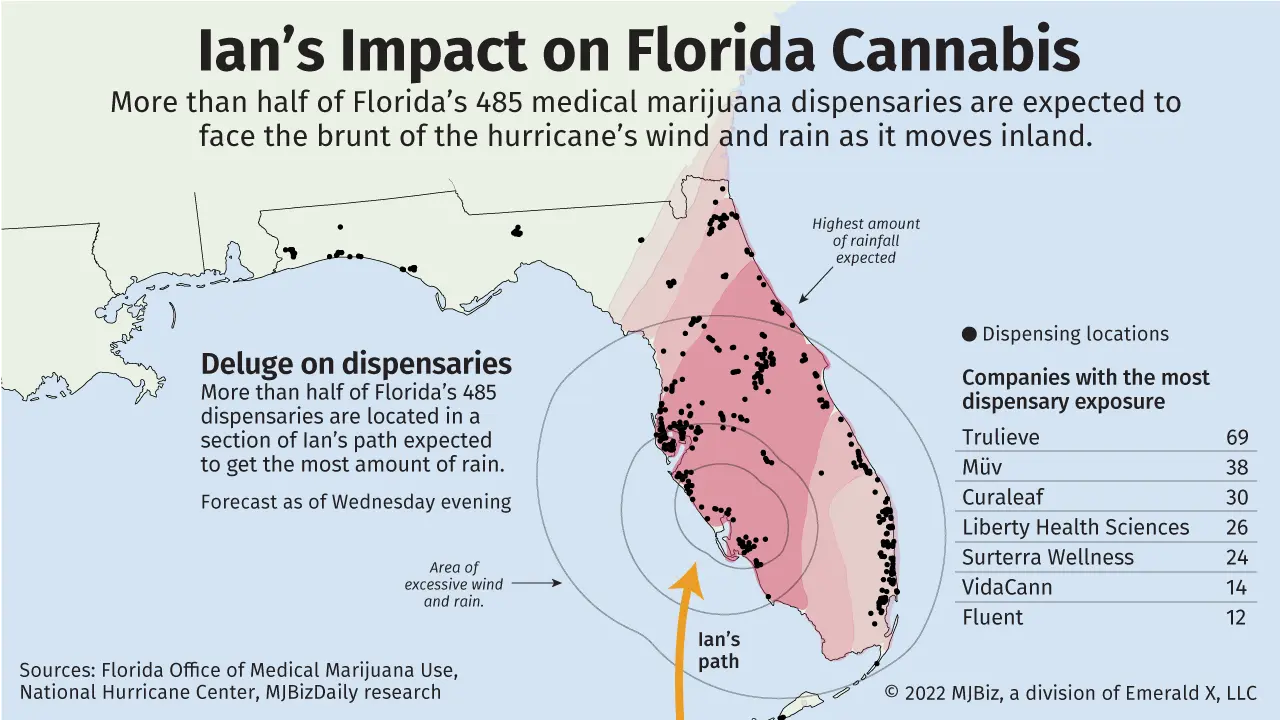
Most everyone agrees that cannabis has flavor challenges.
The inherently bitter, earthy and pungent flavor profile is not particularly well-loved by the masses.
In addition, new or nontraditional marijuana consumers who don’t already vape or smoke can be especially put off by the way cannabis tastes.
These challenges explain why a significant amount of work goes into covering up the natural flavors of cannabis in confections, gummies and beverages.
However, for years now, the cannabis industry has been lousy at flavor, especially when compared to major consumer packaged goods (CPG) manufacturers who have the production volume and capital needed to procure the best flavor companies and food scientists in the world.
Cannabis food and beverage companies are simply not in this league.
In fact, until just recently, most major flavor companies wouldn’t even sell to cannabis manufacturers.
As a result, the quality of flavored marijuana products often lags far behind their CPG counterparts, and cannabis food and beverage manufacturers find themselves slumming in the alleys of flavor, finding high-quality flavorists and experienced vendors.
Unfortunately, this can be like finding a needle in a haystack.
So what do cannabis confection, gummy and edibles manufacturers need to know about how to create a pleasing flavor profile and convey their key ingredient in a method that provides the most appealing appearance and optimal efficacy?
How to create complementary cannabis flavors
The cannabis flavor toolkit generally involves either suppressing or complementing the natural flavors.
However, there are compounds in cannabis that the human palate and olfactory receptors are extremely sensitive to and detectable at levels as low as parts per trillion.
Therefore, attempts to suppress or cover up the taste of cannabis altogether with powerfully sweet but incongruent flavors such as cotton candy will always be less successful than utilizing complementary flavors that work in harmony with marijuana’s natural top, middle and bottom notes.
Assess the terpenes and phenols in the type of cannabis being used to determine whether citrus, floral or herbal flavors will pair together to create the most agreeable flavor profile.
A grapefruit thyme-flavored CBD gummy is an excellent example of a complementary flavor pairing.
CBD has terpenes with grassy herbal and grapefruit notes that meld particularly well with thyme. As a result, this combination works remarkably well.
Another option is to blend two flavors that are not necessarily complementary but combine nicely to produce a more elevated flavor pairing.
Combinations such as lavender lemon, rosemary grape or cucumber mint are all excellent examples of this approach.
How to convey the bitter masking flavor agent
Flavor can either be conveyed via the nanoemulsion that contains the nanosized cannabis oil droplet or via the beverage or food matrix surrounding it.
Many manufacturers attempt to add flavor-masking agents to the food matrix surrounding the droplet of cannabis oil, a common mistake that is far from preferable.
Loading up the food matrix with bitter maskers without adding any flavoring agent to the marijuana oil droplet creates a flavored product that contains a cannabis bomb, so to speak, lurking in the consumers’ food or beverage and waiting to go off in their mouth.
Using oil-soluble bitter maskers intimately incorporated into the same droplet as the cannabis oil is a much better way to go about it.
When done right, this approach has an outsized effect and requires only a minimal amount of flavor to have an impact.
How to use a nanoemulsion
Putting cannabinoids and terpenes into edibles is a tricky business, and the addition of flavor adds a new level of complexity.
Nanoemulsions offer more efficient bioavailability and a more consistent consumer experience – real advantages in a hotly competitive marketplace.
From a manufacturer’s perspective, why take the time and expense to make a great product when the key ingredient cannot be readily absorbed?
There are various quality tiers of nanoemulsions.
Smaller nanoemulsions generally offer better uptake and bioavailability.
However, because outcomes can vary depending upon the type of product format, nanoemulsion and flavors used, manufacturers should experiment through trial and error to determine the right fit for each specific product.
How to avoid the one-size-fits-all trap
In the cannabis industry, many manufacturers are making food and beverage products for the first time and are highly inexperienced in the nuances of developing flavor and delivery formats.
Thus, cannabis product manufacturers can have difficulty finding an experienced flavorist and risk being sold a false bill of goods by vendors who say they have a great one-size-fits-all approach to flavoring different cannabis products.
And while the one-size-fits-all approach might work in a marginally acceptable capacity, as the cannabis category food and beverage category matures and becomes even more competitive, it simply won’t be good enough anymore.
Not all flavoring agents and delivery methods work the same in different food matrices.
Instead, the flavor, mouthfeel and viscosity can differ depending on the format.
Look for a company specializing in nanoemulsions, one that has a flavorist on staff and is willing to be transparent about its ingredients.
These are all important ways to identify reputable vendors.
Most companies will protect their intellectual property and refrain from sharing exact ingredient ratios or percentages.
Still, they should provide the complete ingredient list and be able to create a U.S. Food and Drug Administration-compliant label, if desired.
Understanding what is in the emulsion is also important from the consumer’s perspective: Consumers might be trying to eliminate something specific from their diet or avoid allergens.
Not knowing what is in an emulsion can expose the manufacturer to significant risk if a consumer has an allergic reaction to an unknown ingredient.
In a somewhat flat marketplace, where it can be challenging to differentiate one cannabis brand or product from another, the use of a high-quality flavoring conveyed via a nanoemulsion will offer manufacturers a true competitive advantage.
Christopher Shade is the CEO and founder of Quicksilver Scientific, a manufacturer of nutraceuticals and delivery technologies based in Louisville, Colorado. He can be reached at media@quicksilverscientific.com.
To be considered for publication as a guest columnist, please submit your request here.





